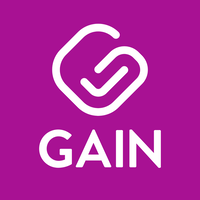 Content marketing is 62% less costly and generates up to three times more leads than outbound marketing. No longer do you have to reach out to the consumer, you can now have them come to you instead. That’s the power of content marketing.
Content marketing is 62% less costly and generates up to three times more leads than outbound marketing. No longer do you have to reach out to the consumer, you can now have them come to you instead. That’s the power of content marketing.
But, it’s much easier said than done. Developing and publishing content takes careful planning. You need to research and stay consistent to generate sales or leads.
You’re probably already using various platforms to produce content and understand that it requires great organization. 62% of effective B2B marketers document their content marketing. Documenting your content marketing efforts also requires a strategy and careful attention to detail. Here’s how to prepare, measure, and properly document your efforts for your business.
Determine your goals first
Before you began your content marketing journey, you probably had some goals that inspired it. Are you interested in getting more clients? Do you want to increase the revenue or sales within your company? Take the time to brainstorm exactly what you’re trying to achieve by producing content and write down your goals.
If your answer is “to produce more content” then you need to take a step back. You don’t want to wander aimlessly in business, but rather have a reason behind every strategy. Your content should support the main goals of your business and target your ideal consumer, bringing us to our next point.
Also Read: If AI is Going to Make You a Better Marketer, You Need to Know These Four Things
Create a customer persona
Up to 78% of consumers trust brands who produce custom content more as they believe they are trying to build a genuine relationship. How do you build custom content exactly? By understanding your audience and tailoring it to their problems.
It all begins with a customer persona. Every business has a target audience and a customer persona helps you understand who you’re marketing to. It is a template of your customers demographics, pain points, values, and more. Here is an example of what a completed one looks like.
Developing a customer persona enables you to create content that perfectly suits your audience. You can craft it around their questions, struggles, and interests. This attracts the highest quality leads which you can then send down your sales funnel.
Also Read: How to Get the Attention Economy to Really Notice You
Curate a content calendar
Consistency is key. One of the best ways to stay on top of your posting schedule is to create a content calendar. This helps your business post content on a regular basis that your audience can always tune in for.
A content calendar can be made for all of the channels you use to reach your audience. A good place to start is on your very own website with a blog. This way, you grow your own fan base and have users organically coming to your site. It also enables you to collect leads on a platform that isn’t owned by another company.
Ideally, you’ll want to use several mediums to reach your target audience. Outside of a blog, social media is a necessary tool in today’s business world. As of 2018, there are almost 3.2 billion active users on social media. Social media is the perfect platform for sharing content you create or repurposing it in different formats, such as infographics or videos.
When you have your marketing channels established, a content calendar can be made in two different ways. The first is to outline general topics or ideas for every day of the week that you’ll publish content. For example, it might look something like this:
Monday: E-commerce topic
Wednesday: Social media topic
Friday: B2B topic
This keeps an even distribution of topics so that your audience gets a well-rounded rotation of messages. Also, it prevents you or your writers from being stumped in search of content ideas.
Secondly, a content calendar tool can be used to schedule exact topics you have planned for every day of the month.
You will need to brainstorm topics for each day and keep in mind any other rules such as word count, who on your team will write it, and what format it will be in. This enables your business to create content ahead of time to schedule into your content management tool.
Also Read: 6 Steps To Creating A Video Marketing Strategy That Works
Record the data
As your content marketing efforts become consistent, you’ll want to ensure that you’re collecting data along the way. This way, you can discover which content is performing best and how to optimize it.
Google Analytics is a free tool you can connect directly to your website to do just this. Collecting emails through a newsletter signup is a common content marketing goal and can be tracked with Google Analytics.
After collecting some emails, Google will begin displaying data on your dashboard. You will be able to select individual goals and discover which pieces of content are driving the most signups. It will show which traffic sources convert the most as well.
Creating goals in Google Analytics can also be good for product sales or any other metric you wish to achieve through content marketing.
Content marketing is a powerful strategy for driving sales and collecting leads. To get the best results though, you will need to plan and document your efforts thoroughly using the tips above.












Comments are closed.